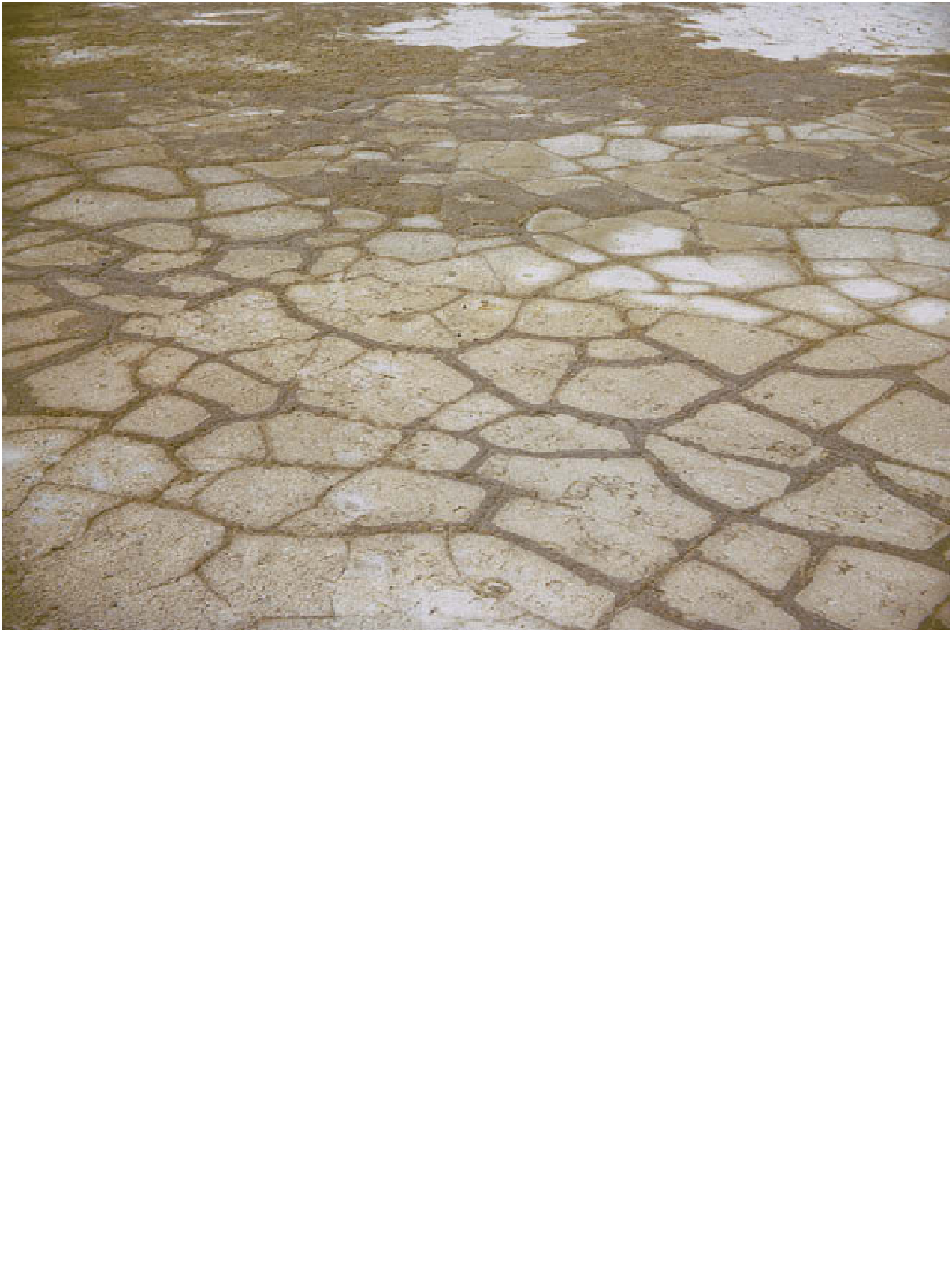Geoscience Reference
In-Depth Information
Plate 19.3
Dehydration cracking in this clay soil in Jordan allows the rapid infiltration of any rainfall or irrigation water. The photo
shows the cracks after they have closed up as the clay expands on rewetting, lowering the soil's infiltration rate.
Photo: Ken Atkinson
hydraulic conductivity,
K
, in units of centimetres
transmitted per hour. It is almost identical to permeability.
Table 19.4
shows some typical values of
K
for represen-
tative textures and structures.
Soils with a horizon or horizons of low hydraulic
conductivity will not allow gravitational water to drain
away. This will promote waterlogging both in and above
such horizons, to the exclusion of air, with adverse effects
on the respiration of plant roots, macro-organisms and
micro-organisms. Waterlogging can also bring about
chemical changes through the process of
gleying
under
conditions where oxygen is excluded (
anaerobism
). Except
for rice, agricultural crops are stunted or killed by
anaerobic conditions. It is therefore often necessary to
provide artificial drainage to remove excess water from the
soil. Many methods are available, including open drains
or ditches, tile or plastic drainpipes in the subsoil, mole
drains or subsoil ploughing. Investment in artificial
drainage was the largest area of capital investment in
British agriculture during the twentieth century.
In order that water can be stored in soil, it is first
necessary for it to enter downwards from the surface. The
rate at which a soil can absorb water, defined as the volume
of water passing into a unit area of soil per unit time, is
the
infiltration rate
. Its units are velocity, cm hr
-1
. Initially
in dry soils infiltration rates can be high, especially in
coarse-textured soils and in heavy-textured soils with
Hydraulic
conductivity
Texture
Structure
K (cm hr
-1
)
Coarse sand
Single grain
> 50
Sandy loam
Blocky, fine crumb
6-12
Loam, silt loam
Blocky
2-6
Clay, clay loam
Blocky, prismatic
0·5-2
Clay, clay loam
Blocky, prismatic, fine platy
0·25-0·5
Clay, heavy clay
Massive, fine columnar
< 0·25












































